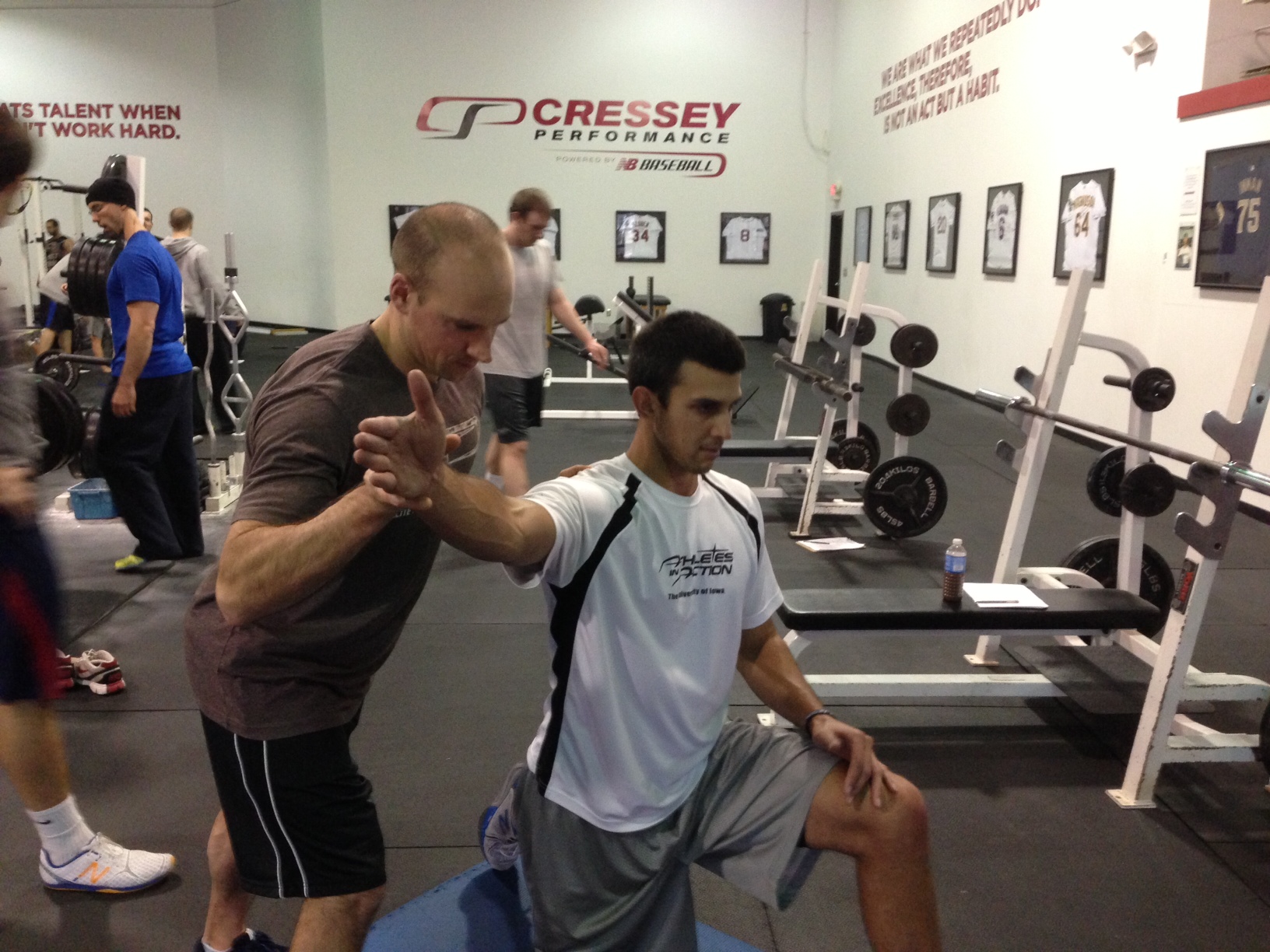Static Posture Assessment Mistakes: Part 2
Written on March 17, 2009 at 5:30 am, by Eric Cressey
In a continuation of last Tuesday’s post, here’s another common mistake you’ll see in the static posture of overhead throwing athletes. Many times, folks will see a low-shoulder like the one below and automatically assume is means “scoliosis.”

In reality, this is a function of both the structural and functional adaptations that take place in a baseball pitcher’s shoulder girdle over the course of a throwing career. I am not of the belief that you can altogether eliminate this, given the structural adaptations that have taken place over the course of years of throwing. However, I firmly believe (and have observed frequently) that as long as one normalized range of motion and strength/stability of the rotator cuff and scapular stabilizers, modest improvements in this posture can come about. Phil Donley goes into great detail on this topic in his presentation in the 2008 Ultimate Pitching Coaches Bootcamp DVD Set.
It is worth mentioning that in some populations, this may be a function of an ankle, hip, lower back, or other issues.
For more assessment information, check out Building the Efficient Athlete.

Sign-up Today for our FREE Baseball Newsletter and Receive and Receive a Copy of the Exact Stretches
used by Cressey Performance Pitchers after they Throw!
Category Baseball Content, Blog | Tags: Baseball Workout, Building The Efficient Athlete, Magnificent Mobility, Pro Baseball Pitcher Workout, Rotator Cuff Exercises, Rotator Cuff Rehab, Shoulder Exercises, Shoulder Health, Shoulder Impingement, Shoulder Pain, Shoulder Rehab, Unstable Surface Training, Weight Lifting Program, Weight Lifting Routine, Workout Program, Workout Routine
|














March 17th, 2009 at 6:26 am
Another population that has this is hockey players as they spend so much time with one hand lower than the other while they hold their sticks.
Not that stick!!!!!
March 17th, 2009 at 3:11 pm
Excellent point – a low shoulder might be seen on static assessment, but the primary goal is to enhance motion where needed (mobility) and improve stability as well. You are right, because of adaptation changes, the low shoulder might always be there, but this doesn’t mean the problem can’t be improved.
Overuse injuries can result in adhesions, weakness and reduced motion. After a series of treatments, often the ROM and strength improves, but the crepitus (medical term to describe the grating, crackling or popping sounds and sensations experienced under the skin and joints)still remains.
Best,
Cole Ellis